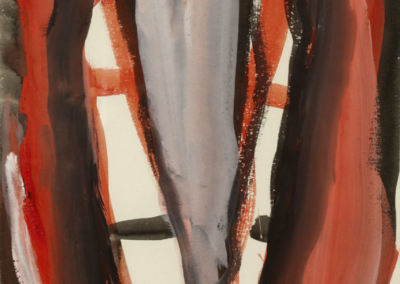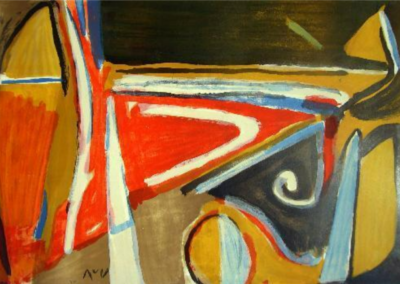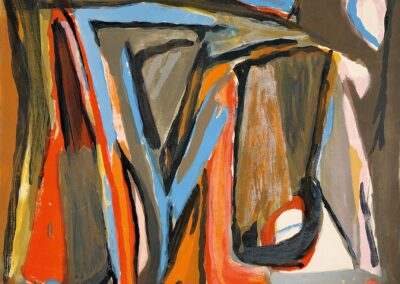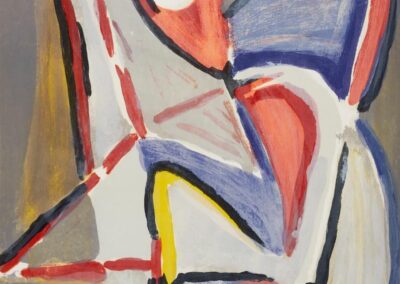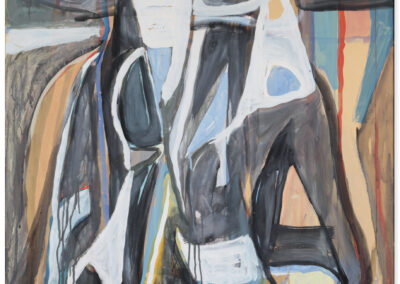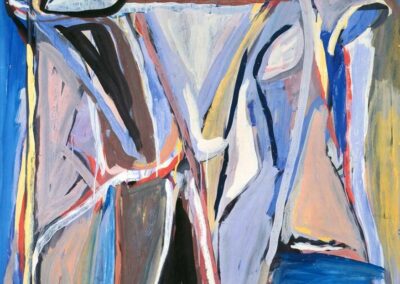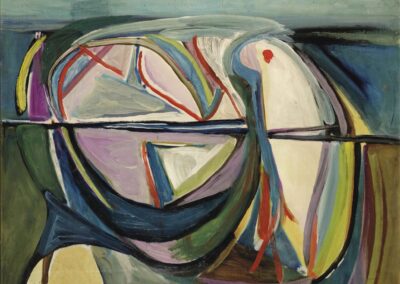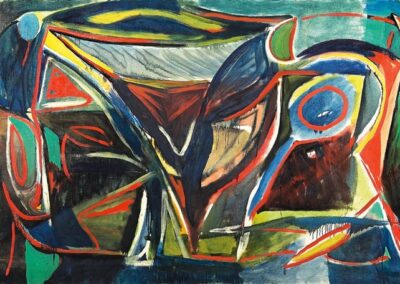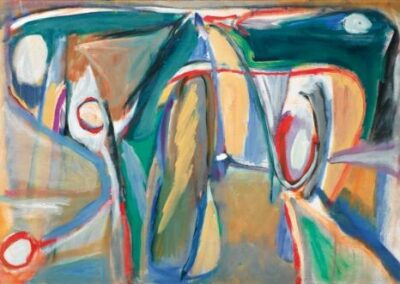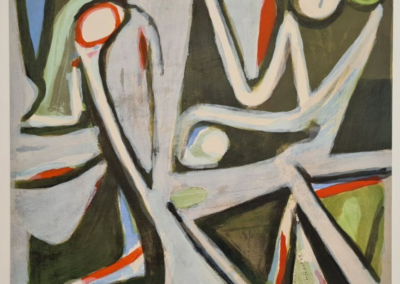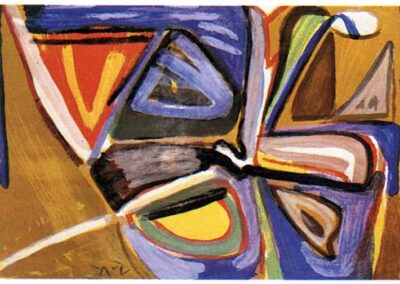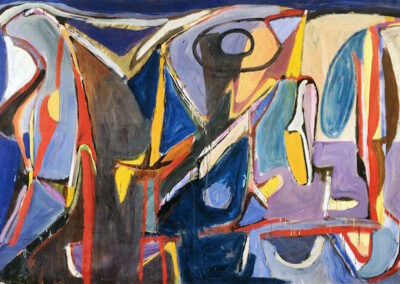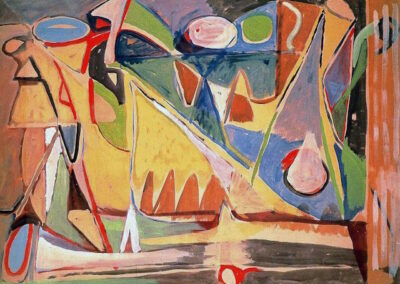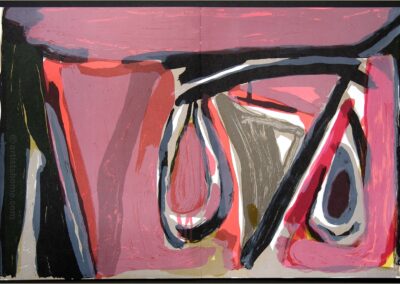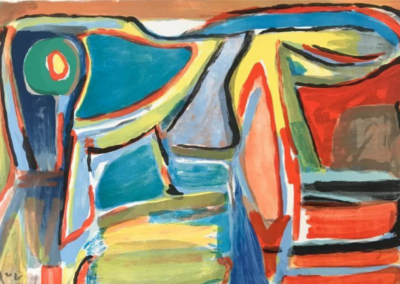Our next Artist You Need To Know is Bram van Velde (1895–1981).
van Velde was a Dutch painter whose work was expressive, with dynamic brushstrokes and abstracted forms that often took shape in his use of paint, strongly influenced by art history but also a unique painter whose work was on the fringes of several of the major movements of his day. His work has been spoken about in terms of lyrical abstraction, Tachisme and wider narratives of abstract expressionism in its many overlapping and confrontational forms in the mid to late twentieth century.
He once stated that “creating a painting is a matter of ensuring that all its parts achieve unity.” Gallerist Franck Prazan, an authority on van Velde’s work, has commented that it is “as if he were composing a piece of music with colors as its notes. His painted writing refers to an alphabet, an alphabet he was the only one to know about.”
A native of Zoeterwoude, Netherlands, he grew up in an impoverished family and was forced to work from a young age: at the age of 12 he was apprenticed in the interior decorating company Schaijk & Kramers in The Hague where his employers recognized his emerging artistic talent. van Velde didn’t serve in WW I (he was the primary breadwinner for his family) but while working frequently visited Mauritshuis museum to copy the works of ‘the Old Masters.’ In the 1920s, Schaijk & Kramers offered him a generous allowance, allowing van Velde to travel Europe to further his artistic education and paint as well.
Upon his arrival in Paris in 1924, van Velde was encouraged by the French painter André Lhote as well as the playwright Samuel Beckett (Beckett’s ideas also had a strong influence on the artist, especially the idea of ‘failure’ and ‘to try again and try better’).
Over the years that followed, the artist suffered through poverty and a lack of recognition. Beckett was a patron of van Velde, both financially and in championing his work, but it wasn’t until the late 1950s and into the 1960s that van Velde garnered a certain critical success, though much of this was seen in his influence upon a younger generation of artists such as Pierre Alechinsky and the Danish painter Asger Jorn (part of the CoBra movement).
In 1957 van Velde also began to experiment with lithography, and this became a medium he would work within for the rest of his career.
The Knoedler Gallery in New York City mounted solo exhibitions of van Velde’s work In 1962, 1964 and 1968. He was recognized as a Chevalier of the Ordre des Arts et des Lettres by the French government (1964), the Netherlands awarded him the Order of Orange-Nassau in 1969 and in 1980 he was made Chevalier of the “Order of the Falcon” in Iceland. French painter and documentary filmmaker Jean-Michel Meurice made a documentary film about the artist, titled Bram van Velde, in 1982.
From invaluable: “Bram van Velde is recognised as being the conduit between the works of American Abstract painters (in particular, fellow countryman Willem de Kooning), with those of the CoBra Group. In his History of Modern Art, H. H. Arnason dubbed van Velde, “One of the most isolated and powerful of Art Informel painters”….van Velde embodied the spirit of optimism during an austere and sombre period. This spirit is clearly translated in this colourful composition which can only be described as an expression of raw emotion with its bright bursts of colour and spontaneous brushwork. The fury, passion, and hope felt by his generation are evoked to perfection, restricted only by the size of the canvas.”
Gwenaël Kerlidou writing about van Velde’s art and life in Hyperallergic (nearly half a century after van Velde’s passing): “Bram van Velde’s work represents a direct result of the philosophical questioning of the consequences of World War II, which would continue and develop from the fifties to the seventies ….From a position of embrace, the painter’s individual involvement with painting would progressively retreat to a position of doubt and distance. This doubt, at first conceived on an individual existential level in the ‘50s, progressively spreads to a questioning on a societal plane in the ‘60s and ‘70s, when painters could no longer be naïve about what their involvement with painting meant ideologically.”
He died on December 28, 1981 in Grimaud, France at the age of 86. Bram van Velde is considered among the first rank of European postwar painters with major retrospectives organized posthumously in France in Paris and Lyon; Maastricht (The Netherlands); Geneva (Switzerland); Lefebre Gallery (New York); and Valencia and Madrid (Spain).
Today, his works are held in the collections of the Musée d’Orsay in Paris, the Art Institute of Chicago, and the Tate Gallery in London, among many other institutions both public and private. Many more of Bram van Velde’s artworks can be seen here and here.

